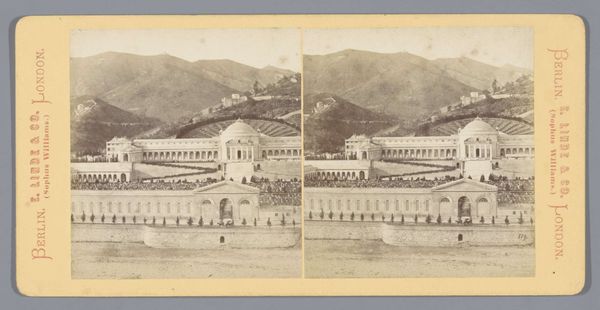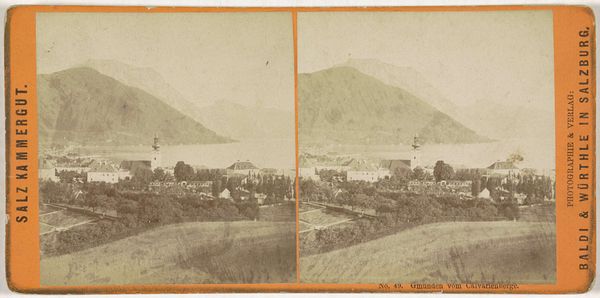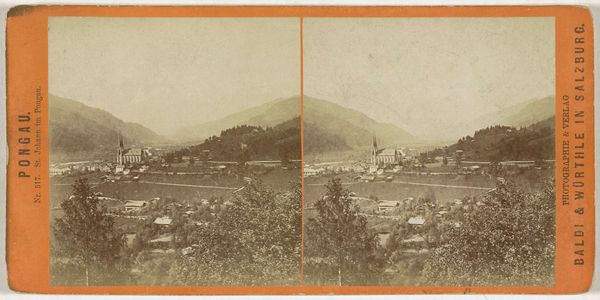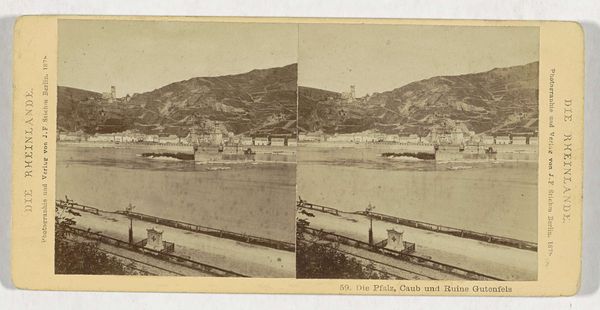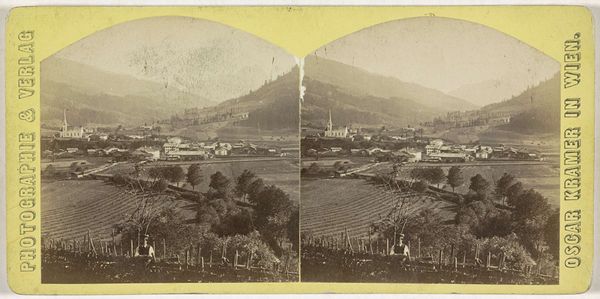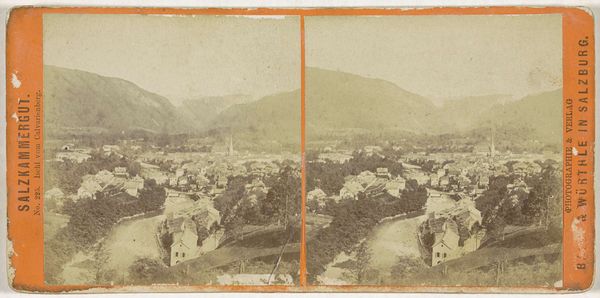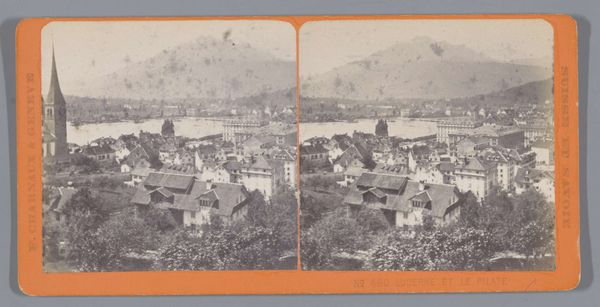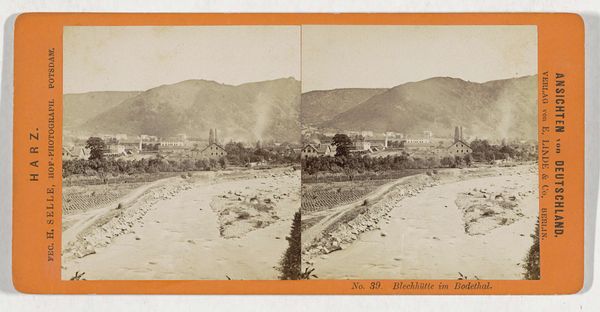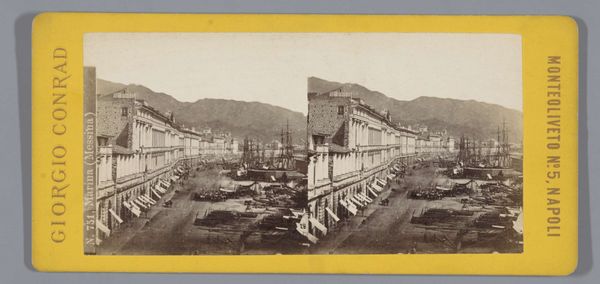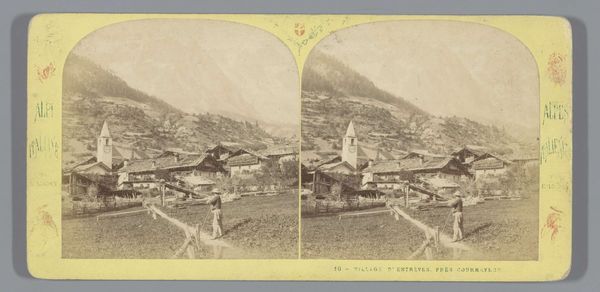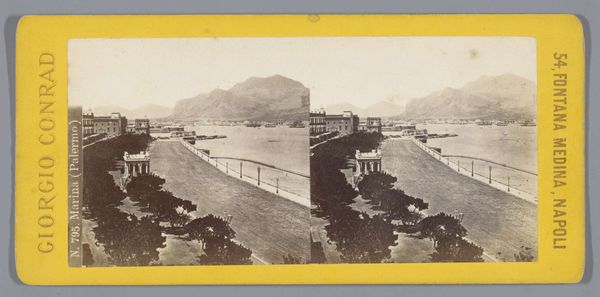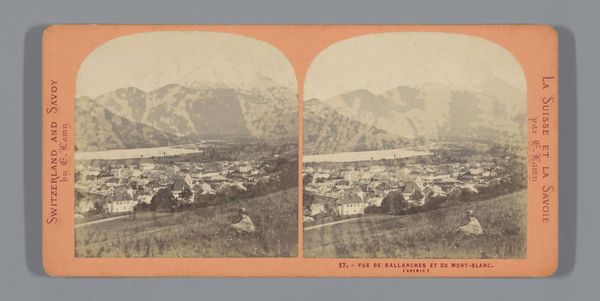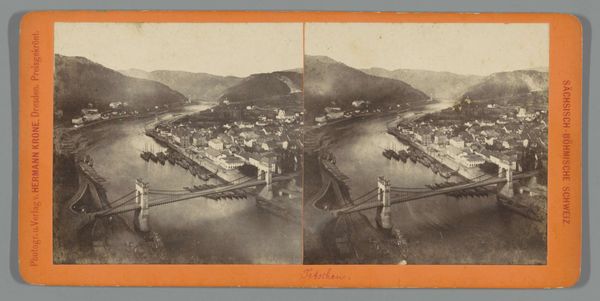
Gezicht op Innsbruck, gezien vanaf de Bergisel, met rechts de abdij van Wilten 1869
0:00
0:00
Dimensions: height 87 mm, width 178 mm
Copyright: Rijks Museum: Open Domain
Editor: We're looking at "View of Innsbruck, Seen from the Bergisel, with Wilten Abbey on the Right," a photograph from 1869 by Ernest Eléonor Pierre Lamy. It's… remarkably clear, especially considering its age. There's a sense of tranquility despite the panoramic view of the city. What stands out to you in this photograph? Curator: Ah, yes, a beautiful scene. This image speaks volumes, doesn't it? Beyond the city and the abbey, I sense a yearning for order and control that defined that era. Look at the regimented fields leading up to the buildings; they seem almost like a stage. It whispers to me of the emerging power of photography to capture and, in a way, possess a place. Don't you think it's interesting how photography at this time often tried to emulate painting? Editor: I can see that. I hadn’t thought of it that way. The almost staged composition… Did this "pictorialism" style reflect anxieties about photography's status as art? Curator: Precisely! The photographer, in embracing landscape and staging the composition, stakes a claim in the artistic world. It suggests a deeper desire, maybe to prove photography was more than just mechanical reproduction, to elevate it to something... magical. Editor: So it's trying to find its place, both literally – capturing a place – and artistically, as an art form? It's all there, hidden beneath this peaceful-looking cityscape! Curator: Absolutely. Art is full of layers! That initial impression of tranquility is still true, it is also a complex declaration. Editor: Thanks, I would not have spotted that!
Comments
No comments
Be the first to comment and join the conversation on the ultimate creative platform.
